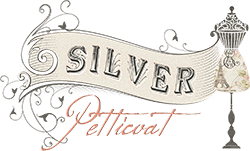TV Series Review: My Brilliant Friend (2018)
My Brilliant Friend is an eight-part miniseries, an Italian-American adaptation of Elena Ferrante’s first book in her heralded Neapolitan novels. A second season, based on the second book in the series, is already in the works. The whole book series is an examination of friendship, of two girls who become women, who are forever seeking to make their way in life. Through poverty and slums and misogyny and mistakes and manipulations and jealousies and on it goes.
The books are fantastic, truly exquisite – brutal and poetic. I am a huge fan. And I must say, that the adaptation captures the essence of the novel, the poetry, and the brutality. It’s a very fine adaptation that very visually brings the novel to life. It’s very, very well done.
My Brilliant Friend opens, as does the novel, with an older woman getting a frantic middle-of-the-night call that her oldest friend is missing. This ignites a four-novel reverie and reminiscence, an autopsy of a life and a friendship.
My Brilliant Friend covers the early years of our two heroines, Elena “Lenù” Greco (who is doing the reminiscing) and Lila Cerullo (who has gone missing). Overall, it’s a decade-long look at their childhood and young adult years, growing up in an impoverished, post-WWII, working-class borough of Naples.
Growing up in the Slums of Naples
Lenù and Lila are the smartest in their class in elementary school. Lila, the shoemaker’s daughter, has already taught herself to read and write. She is smart, feisty, scrappy, confronting the world and those who do her wrong. Lenù is reserved, a quiet, observant introvert, more likely to fade into the shadows and faint at violence than get in the thick of it like Lila. The two become unlikely friends.
Meanwhile, violence is every day in this neighborhood. Local dons – feuding mafia kingpins – run the hood. All must defer to them, appease them, not come on the wrong side of them and their businesses. Basically, all are in debt to them, and debt comes with conditions.
Excepting the dons and their families and henchmen, all are impoverished. Education is a luxury. Women are put repeatedly in their place. And two brilliant little girls are trying to navigate this world, trying to make a new place for themselves. Perhaps even daring to go where no girl from this hood has gone before.
RELATED: PERIOD DRAMA REVIEW: BLEAK HOUSE
Lila’s family forbids her from continuing school at the end of elementary school. The pleas of the teacher fall on deaf ears. There is no need for a woman to be educated. And there is no money. Lenù’s family let her go to middle school and later to high school, finding the money, scrimping and saving, sacrificing for her to take an education.
But it always with the command that she must be the best. If you’re poor and female, literally from the wrong side of the tracks, you will always have something to prove. And the people on the other side of the tracks will always laugh at your working-class accent and wrong clothes.
As Lenù increasingly has a life outside of the neighborhood, Lila becomes increasingly embroiled in its doings. The Solara brothers cruise the neighborhood in their car, sons of the local don, and pick up girls and have their way with them. That’s just how it is. There are factions of angry workers, communists insisting upon another way, workers’ rights. Men are killed. Women are beaten. Life goes on.
A Fine Line Between Love and Hate
Lila and Lenù have a close relationship, a competitive and tense relationship. Lenù considers Lila the brilliant of the two, the one who can do anything. Lenù works hard, apparently lacking the natural brilliance of Lila. They play mind-games aplenty with another, manipulating. Jealousies are fostered.
In the meantime, Lenù has the opportunities that Lila will never have. So, Lila shows off her brilliance by learning Greek before Lenù does in high school, etc. It’s a relationship of one-upmanship, of who’s better, more brilliant, more attractive, more wanted. And yet, there remains some essential kernel of togetherness, of love, of two desperate girls trying to make a life for themselves.
As time goes on, Lila grows into a beautiful young woman, long and lean. And all in the neighborhood males, even the dons’ sons, desire her. Lenù is all hips and acne and glasses, the apparent ugly friend to the neighborhood beauty.
As Lila takes center stage, confidently dancing, confronting, speaking her mind, Lenù folds inward, self-conscious, unable to speak up and assert herself, to say no. Furthermore, Lila is increasingly pressured by her family to accept a marriage proposal from the vicious son of the local don. All men in this realm are vicious in their way. It’s a brutal world, heart-aching. And there are no fairy godmothers here. Just imperfect human beings muddling along, trying to navigate as best as possible.
Brutally Tender and Tenderly Brutal
My Brilliant Friend is brutal, tenderly brutal and brutally tender. And it is brilliant. This is a fantastic adaptation. It’s got the bleakness of a modern-day Dickens. The death count is up there with a Gaskell novel. Woe is readily apparent like a Hardy novel. But it never falls into melodrama. Poverty and its violence are not sugarcoated. It’s an intricate world of familial and societal connections, of feuds and injustices and forgiveness.
You are sucked into this world, into the lives of these very imperfect people and just feeling for them, empathizing with their impossible positions. Caring for them even when they do wrong, when there are only bad and worse decisions to make.
Indeed, poverty breeds desperation, and desperation makes one poor decision after another. My Brilliant Friend does not flinch in showing this desperation, in showing what leads to this desperation and what this desperation leads to. There isn’t a whole lot of place for romance in this realm.
RELATED: CLASSIC REVIEW: THE MILL ON THE FLOSS (1997) – A FLAWED YET INTRIGUING ADAPTATION
The acting in My Brilliant Friend is first rate. The leads change some episodes in, as the girls age. And it is uncanny how the teens look like the girls, right down to Elena’s chin mole and her gait.
Meanwhile, the cinematography is wonderful, very detailed and rich. The script is very faithful to the source material and has captured the feel of the novel. In fact, I found myself sympathizing more, I think, with the visual Lila and Lenù than I did in the novel.
In the novel, there is a much older and wiser narrator, casting insight and judgment on her younger self, and in the series, you realize just how young and inexperienced these girls were. They could not have known the consequences of their actions. They were acting like any other self-absorbed teen.
Overall, My Brilliant Friend is powerful viewing, just as the novel is powerful reading. It’s examining social structures, societal frameworks, familial dynamics, patriarchal hierarchies and friendships, female friendships.
It’s thought-provoking stuff, heart-wrenching stuff, about what it is to be human, about how we organize our lives, our communities, our societies, our countries, our world. Social realism at its best. In short, it’s brilliant.
Bring on season two!
RELATED: VINTAGE FILM REVIEW: TESS OF THE D’URBERVILLES – A BEAUTIFUL ADAPTATION
Content Note: Rated TV-MA. There is violence throughout (also against children), but nothing graphic. There is one brief shot of full-frontal female nudity when a woman gets out of the bath. Also, there is a scene of sexual violence, where the camera focusses more on the girl’s face than the act itself. Swearing is heard, but in Italian and subtitled.
Where to Watch: HBO, Amazon Prime.
Photo Credit: HBO/TIMvision/RAI.
OVERALL RATING
“The stuff that dreams are made of.”
ARE YOU A ROMANCE FAN? FOLLOW THE SILVER PETTICOAT REVIEW:
 Our romance-themed entertainment site is on a mission to help you find the best period dramas, romance movies, TV shows, and books. Other topics include Jane Austen, Classic Hollywood, TV Couples, Fairy Tales, Romantic Living, Romanticism, and more. We’re damsels not in distress fighting for the all-new optimistic Romantic Revolution. Join us and subscribe. For more information, see our About, Old-Fashioned Romance 101, Modern Romanticism 101, and Romantic Living 101.
Our romance-themed entertainment site is on a mission to help you find the best period dramas, romance movies, TV shows, and books. Other topics include Jane Austen, Classic Hollywood, TV Couples, Fairy Tales, Romantic Living, Romanticism, and more. We’re damsels not in distress fighting for the all-new optimistic Romantic Revolution. Join us and subscribe. For more information, see our About, Old-Fashioned Romance 101, Modern Romanticism 101, and Romantic Living 101.

